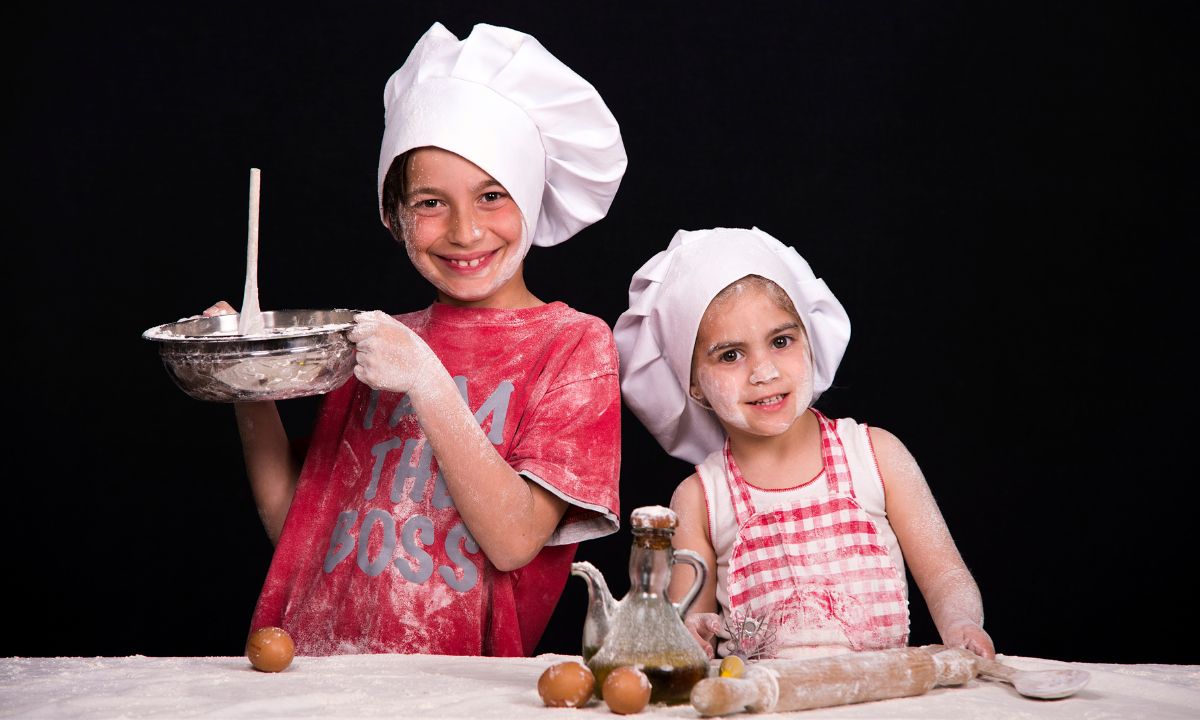Introduction
Tips for Cooking with children can be a fun and rewarding experience for both parents and kids. It not only provides an opportunity for families to bond but also teaches essential life skills that will benefit children as they grow up. In this article, we’ll explore the benefits of cooking with children, age-appropriate tasks, safety tips, and ways to encourage creativity in the kitchen.
Benefits of Cooking with Children
Skill Development
When children participate in cooking activities, they develop various skills, such as fine motor skills, hand-eye coordination, and basic math skills. Following recipes allows them to practice reading and comprehension, while measuring ingredients helps them understand fractions and basic math concepts.
Bonding and Family Time
Cooking together offers a chance for parents and children to bond, creating lasting memories and strong family connections. Spending quality time in the kitchen can foster open communication and provide a platform for discussing daily events or sharing stories.
Healthy Eating Habits
Exposing children to a variety of foods and involving them in meal preparation can encourage healthy eating habits. They’re more likely to try new foods and develop a broader palate, making it easier to establish a well-balanced diet.
Age-Appropriate Cooking Tasks
Toddlers (2-4 years)
At this age, children can help with simple tasks like washing fruits and vegetables, stirring ingredients, or tearing lettuce for salads. Always supervise them closely and provide child-safe utensils.
Preschoolers (4-6 years)
Preschoolers can handle more complex tasks, such as cracking eggs, measuring ingredients, or using cookie cutters. Teach them the proper way to hold and use utensils, and continue to closely supervise their activities.
School-Age Children (6-9 years)
School-age children can begin using basic kitchen tools like whisks, graters, and can openers. They can also help with planning meals, making sandwiches, and using the microwave under supervision.
Pre-Teens (9-12 years)
Pre-teens can take on even more responsibility in the kitchen, like using the stovetop, oven, or electric mixer with proper guidance. They can also learn to follow more complicated recipes and help with grocery shopping.
Safety Tips for Cooking with Children
- Teach children about kitchen safety, including proper handwashing, avoiding cross-contamination, and using cutting boards.
- Always supervise children when using sharp tools or appliances.
- Teach them how to handle hot items safely, using oven mitts or potholders.
- Store cleaning supplies and chemicals out of reach of young children.
- Encourage children to ask for help if they’re unsure about a task or need assistance.
Encouraging Creativity in the Kitchen
- Allow children to choose recipes or ingredients to spark their interest.
- Involve them in meal planning and grocery
- shopping, encouraging them to pick out new foods to try. 3. Experiment with different colors, textures, and flavors to keep things exciting and visually appealing.
- Let them decorate dishes, such as adding their own toppings to pizzas or designing their own dessert plates.
- Praise their efforts and celebrate their culinary creations, regardless of the outcome.
- Conclusion
- Involving children in the cooking process can be a fun and enriching experience for the whole family. By participating in age-appropriate tasks, children develop essential skills, learn about healthy eating habits, and strengthen family bonds. Remember to prioritize safety and encourage creativity, making the kitchen an enjoyable space for kids to explore and learn.
- FAQs
- 1. At what age can children start helping in the kitchen?
- Children can start helping in the kitchen as early as two years old with simple tasks like washing fruits and vegetables or stirring ingredients. As they grow older, they can gradually take on more responsibilities, always under adult supervision.
- 2. How can I make cooking with children more enjoyable?
- Allow children to choose recipes or ingredients, involve them in meal planning and grocery shopping, and experiment with different colors, textures, and flavors. Celebrate their culinary creations and provide positive reinforcement.
- 3. What are some safety tips when cooking with children?
- Teach children about kitchen safety, including handwashing, avoiding cross-contamination, and using cutting boards. Supervise them when using sharp tools or appliances, and store cleaning supplies out of their reach.
- 4. How can cooking with children promote healthy eating habits?
- Involving children in meal preparation exposes them to a variety of foods and allows them to try new ingredients. They’re more likely to develop a broader palate and establish a well-balanced diet.
- 5. What are some age-appropriate cooking tasks for pre-teens?
- Pre-teens can use the stovetop, oven, or electric mixer with proper guidance. They can also follow more complicated recipes and assist with grocery shopping.
